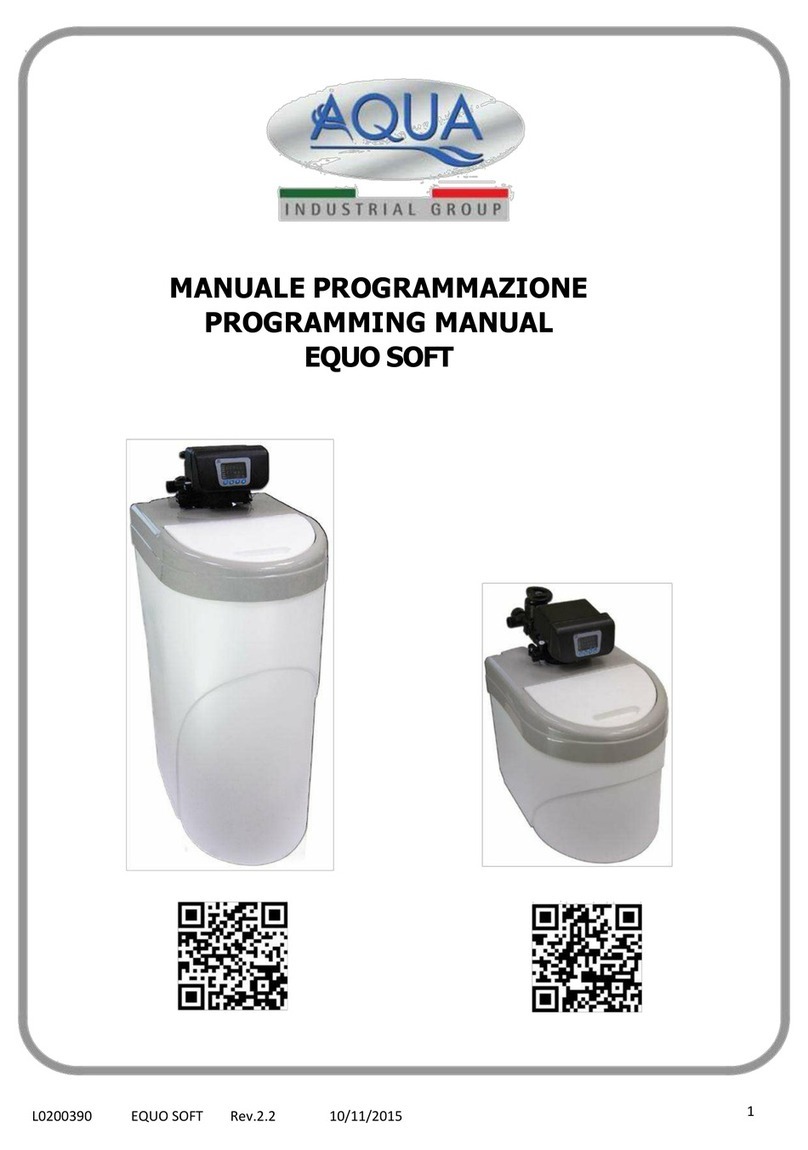When reassembling the sump, check that the O-Ring is not deteriorated (or pinched) and that it is
positioned correctly in its seat.
If the water is not used for several weeks, it is advisable to remove the cartridge from the container.
Before reinstalling the filter cartridge, wash it thoroughly and sterilize it, or fit a new cartridge.
At the end of all maintenance operations, it is advisable to let the water run for a few minutes before
using it.
To carry out maintenance, follow the steps below:
- Divert the passage of water from the filter, by acting on the by-pass (if present) or by closing the
water taps;
- Act on the screw or on the vent button, in order to reduce the internal pressure of the filter;
- Place a low container on the floor to collect the water that will drip from the filter when it is opened,
or some rags to collect the water;
- Disassemble the sump using the special plastic key. Be careful not to drop the sump. It is sensitive
to shocks;
- Be careful not to lose the O-Ring and check that it is not damaged. Otherwise, recover a new O-
Ring;
- Remove the cartridge and eliminate any dirt present in the vessel, inside the head or on the O-
Ring.
- Place a new cartridge or the removed cartridge (if washable) in the sump after cleaning it, taking
care to position the gaskets correctly, if present;
- Screw the sump onto the head (by hand);
- Reactivate the water network by keeping the vent valve open until all the air present in the network
has escaped, after which close the vent valve.
- If the filter shows dripping tighten the sump with the key;
- Regardless of the type of cartridge used, at the end of each cleaning or maintenance operation, let
the water run for a few minutes before using it.
The frequency of intervention is linked to the type of cartridges used:
CARTRIDGES FOR SEDIMENTS: (wire wound, Melt Blown, pleated, RLA, etc.):
Replace or wash the sediment cartridges within 2-5 months, or if necessary, if a significant pressure
drop is detected. Washable cartridges (RLA) can be used multiple times.
They must be washed and disinfected periodically, as specified below.
1). Wash thoroughly under running water.
2). Immerse the cartridge in disinfectant that does not alter / corrode the structure of the cartridge
itself, for 5 (five) minutes.
3). Remove the cartridge from the disinfectant liquid and rinse thoroughly.
The polypropylene cartridges (Melt Blown) must be thoroughly washed before installation, to
eliminate the residues of the antistatic compound used for processing of the fibers.
CARBON CARTRIDGES:
Replace the active carbon cartridges within 3-4 months, or if necessary if you perceive a taste of
chlorine, bad smells or tastes.
Before installing a new cartridge, rinse thoroughly to remove any carbon dust residues.
SALT POLYPHOSPHATE:
Replace the polyphosphate salt cartridges within 4-6 months or, in any case, when the
polyphosphate salt is exhausted.



























